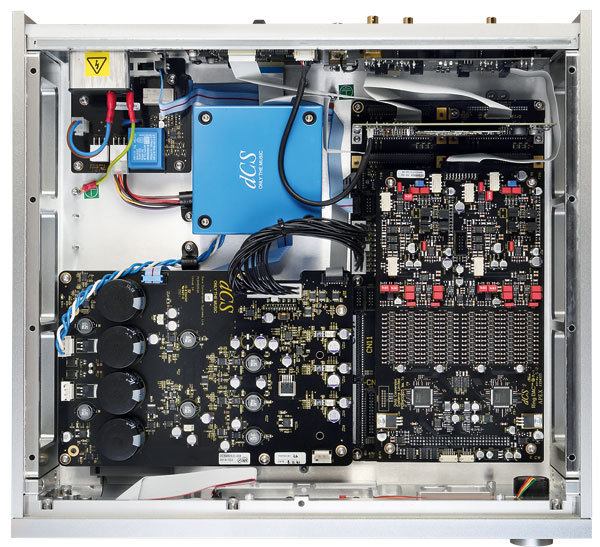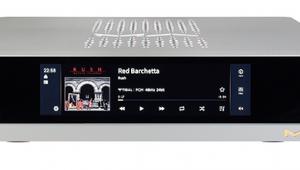dCS Bartók APEX Network-Attached DAC

 Debuted in the flagship Vivaldi, and now trickled down to the Bartók, dCS's APEX upgrade brings enhancements to the PSU, Ring DAC clocking and analogue output
Debuted in the flagship Vivaldi, and now trickled down to the Bartók, dCS's APEX upgrade brings enhancements to the PSU, Ring DAC clocking and analogue output
Maybe it's a sign of the times, or the state of the specialist high-end audio market, but this latest version of dCS's Bartók streaming DAC, often referred to as the company's 'entry-level' model, is now almost twice the price of the original [HFN May '19]. Then, the Bartók was £9999, or £11,999 when fitted with the optional headphone amplifier; now the Bartók APEX, taking on board the company's latest package of enhancements, first seen in the Vivaldi APEX [HFN Jun '22], is £19,000, rising to £21,500 if you choose to take the headphone option.
Given this, and the performance on offer from the APEX upgrade package as already experienced in the Vivaldi APEX, expectations are necessarily high for what the new Bartók might bring to the digital audio party. Nor is this the first time this model has been upgraded in its relatively short life. Last year a major software update – Bartók 2.0 – included an upgrade to the mapping algorithm controlling the dCS Ring DAC, improvements to the DSD upsampling, and new digital filter options.
The Inside Story
Now the Bartók gets the full APEX package, which isn't a new digital-to-analogue conversion technology – no matter what you may have read elsewhere – but rather a rethink of the power supplies, the clocking of the Ring DAC and improvements to the analogue output stage.

To go into slightly more detail, though the basis of the conversion remains the same, the only element of the DAC hardware that's unchanged is the resistor array at its core. The main DAC PCB has been redesigned and re-laid, as has the reference supply that feeds it, and there are enhancements to the filter, summing and output stages of the DAC. The symmetry of the summing stage has been improved, individual transistors on the DAC board have been replaced with a compound pair, and the balanced analogue output stage is, well, new.
So, it's apparent that, while the Bartók looks the same as always, these are far from running updates. And the good news for existing Bartók owners is that an upgrade package can bring their players up to date, albeit at a cost of £7500. That headphone amp option, by the way, is only available at point of purchase as it requires a different faceplate configuration. And while the original Bartók we reviewed almost four years ago was supplied with the headphone stage installed, the APEX version we have here arrived 'naked'!
Otherwise, the Bartók APEX is replete with connectivity, including AES/EBU XLRs, which can be used separately or paired to accept PCM data at up to 384kHz, dCS-encrypted DSD, or DSD in DoP up to DSD128. Then there are S/PDIF inputs on RCA, BNC and optical plus a choice of two USB inputs – one a galvanically isolated USB-B for computer connection, the other a USB-A port to accept music from storage devices of up to 32GB. There are also word clock inputs for the Bartók to be slaved to an external clock source.
Complete Package
For many users – and count me in on this one – the most attractive feature of the Bartók will be its ability to operate as a complete network-connected digital player via its galvanically isolated RJ45 Ethernet port. Here music may be streamed from a music store on the home network, at up to 384kHz PCM and DSD128, or from online sources including Qobuz, Spotify and Tidal, with full MQA decoding for the last of these. Internet radio is also available, and you can even play music from your phone via Apple AirPlay, though this latter facility is well into 'sledgehammer cracking a nut' territory. Finally, the unit is also Roon-ready.
Control for all this network capability is provided by the excellent dCS Mosaic Control app, for Android or iOS, available free from the usual online app stores. This works in conjunction with the Mosaic Processor software running on the hardware, and provides 'palm of your hand' set up and control of the Bartók. In use it proves preferable to the minimal buttons arrayed across the front of the unit, and the often-complex menus they access.























































